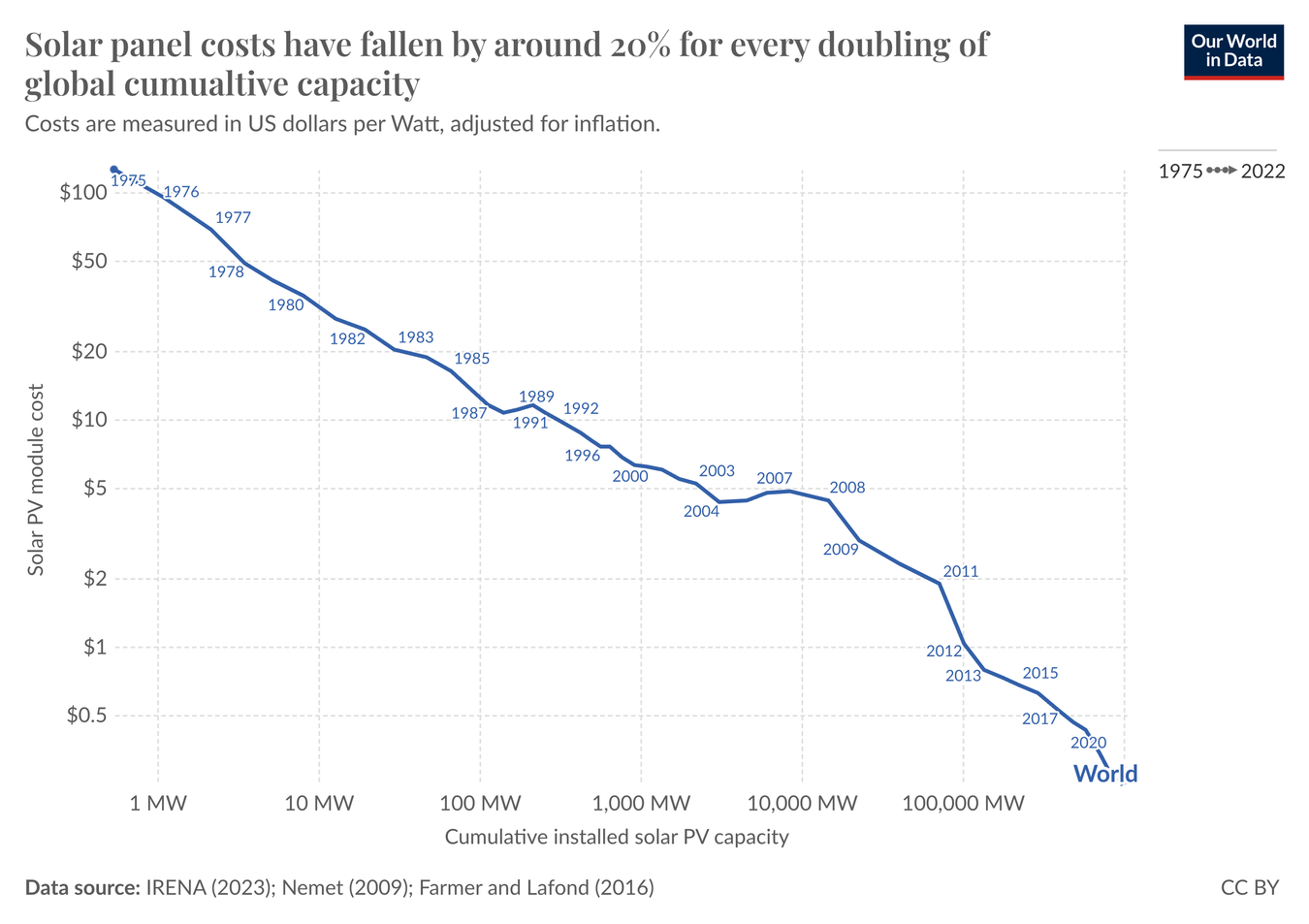How We Keep Getting Renewable Energy Projections Wrong—and Why That’s a Good Thing
By Dan Roscoe, CEO of Roswall Development
This consistent underestimation of renewable energy growth by organizations like the International Energy Agency and U.S. Energy Information Administration isn’t just an analytical failure; it’s a sign of remarkable progress.
In 2020, U.S. wind energy capacity was four times higher than the most optimistic projections made two decades earlier. Solar energy saw similarly explosive growth, with costs plummeting far faster than anyone predicted. So, what happened?
The Track Record of Underestimations
For decades, energy forecasters have consistently lowballed the growth of renewables. In 2000, the EIA projected that wind energy capacity in the U.S. would grow to just 16 gigawatts by 2020. In reality, wind capacity exceeded 100 gigawatts that year—16 times higher than expected. Similar patterns exist in solar energy, which has become one of the fastest-growing energy sources globally.
A quick glance at the data highlights this discrepancy. The dramatic decline in costs for wind and solar technology has far outpaced predictions, while capacity growth has skyrocketed. For example, the cost of solar photovoltaic (PV) panels has dropped by nearly 90% in the last decade alone, fueling adoption at unprecedented rates. Projections didn’t just miss the mark—they missed an entire movement.
Why Have Projections Been So Inaccurate?
Projections often rely on outdated modeling assumptions, such as slow technological progress and static policy landscapes. These assumptions are revealing themselves to be overly conservative, leading to models that frequently prioritize historical trends while ignoring the exponential nature of innovation and the transformative potential of new technologies.
The fossil fuel industry, in an blatant example of conflict of interest, has had significant influence which has added bias to energy forecasting. Many models reflect a preference for maintaining the status quo, underestimating renewables' disruptive potential while overstating fossil fuels' staying power.
And while renewables have benefited from evolving policies like subsidies, tax incentives, and ambitious net-zero goals, forecasters rarely account for future policy shifts, which can dramatically accelerate adoption rates.
One of the biggest factors overlooked by projections is the rapid advancement of renewable energy technologies. Breakthroughs in wind turbine efficiency and the scalability of solar manufacturing have slashed costs. As these technologies improve, their affordability and accessibility have exceeded even the most optimistic expectations.
Why This Is Good News
Outperforming projections is more than a statistical anomaly—it’s proof that innovation and investment in clean energy are working. Renewable energy is now a competitive option, with wind and solar often cheaper than fossil fuels in many regions.
Surpassing expectations has also helped silence skeptics. For years, renewables were dismissed as unreliable or too expensive. Now, their rapid growth demonstrates their viability, scalability, and ability to meet global energy demands.
The reality of accelerated growth in renewables brings us closer to achieving net-zero emissions targets. Faster-than-expected adoption reduces greenhouse gas emissions sooner, mitigating climate risks and providing hope for a more sustainable future.
What This Means for the Future
Renewable energy has proven its resilience, with market forces driving its sustained growth. Declining costs and rising demand have created a self-sustaining cycle that reinforces the viability of clean energy technologies. To keep pace with this rapid evolution, it’s essential to rethink how energy growth is forecasted.
Future models should account for the potential of rapid innovation, ambitious policy goals, and the exponential progress of technology. Governments and industries can further accelerate this transition by leveraging the momentum through strategic investments, supportive policies, and public-private partnerships, paving the way for an even brighter clean energy future.
Renewable energy has consistently defied expectations, surpassing projections and proving that a cleaner future is within reach. Historical underestimations highlight just how much progress we’ve made and how much more is possible.
If renewable energy keeps outperforming the odds, we may achieve a sustainable future faster than anyone thought possible. And that is a projection worth celebrating.



